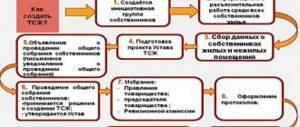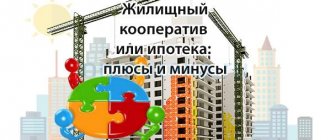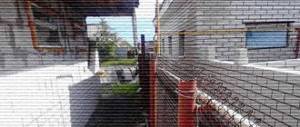Every year in our country, houses with interlocked residential development are gaining the most popularity when choosing housing. The main reason for the trend is the cost-effectiveness of such housing. They require lower construction costs and operate on the principle “the more owners, the more profitable the acquisition or construction.” However, before you buy an apartment in a combined house, you should know all the features of such a structure, and, of course, the legal nuances.
Legal basis for this type of housing
The procedure for carrying out work, the concept and legal status of combined development objects is regulated in the following documents:
- Town Planning Code of the Russian Federation (Article 49);
- Housing Code of the Russian Federation, it mentions residential buildings of blocked development, as well as their properties;
- Government Resolution No. 220. This document outlines the procedure for purchasing a house in a combined development (primary market).
- Land Code. This document describes the procedure for issuing land for the construction of a block of flats;
- Letter of the Ministry of Economy of the Russian Federation D23I-5649. This letter describes the procedure for placing houses on one plot;
- Order of the Minister of Construction No. 223 and the State Code. These documents describe the procedure for purchasing an apartment and allocating land for construction;
- In documents for apartment buildings there are references to this development.
Land plot under a blocked building
Questions also arise regarding land plots on which blocked-off buildings stand. Each block of a residential building of blocked development must be located on a separate land plot formed directly for its use (Clause 2, Part 2, Article 49 of the Civil Code of the Russian Federation).
Check that you have attached a technical plan for the capital construction project to the permit to put the facility into operation (Part 10.1 of Article 55 of the Civil Code of the Russian Federation). It must be prepared according to the rules described in Art. 24 of the Federal Law of July 13, 2015 N 218-FZ.
The technical plan must indicate:
- data about the building, premises, which will be needed for its state cadastral registration;
- information about part or parts of a building or premises in the case of cadastral work;
- new information required for entering into the Unified State Register of Real Estate about a building or premises to which a cadastral number has been assigned, in the event of cadastral work being carried out.
The technical plan is drawn up in two parts: graphic and text. The graphic part reflects the data of the cadastral plan of the territory or an extract from the Unified State Register of Real Estate about the land plot on which the house is located. The location of the object is indicated.
The graphic part of the plan is a plan of a floor or part of a floor of a building (or the whole building or part of it, if there are no floors). This plan marks the location of the premises and parking spaces.
When a residential building of a blocked development is put into operation, each block is placed on the state cadastral register as a separate building with the purpose of “residential” (letter of Rosreestr dated 03/06/2017 N 14-02689-GE/17).
Land plot as part of the common property of the MKD
954942
What is blocked development
At their core, blocked residential buildings are houses that have from two to ten autonomous residential blocks and do not exceed a height of three floors. Such buildings have common walls. Each block is an individual living space with a separate entrance and the presence of utilities. At the same time, there is no common property. Each individual block of residential development can be registered as a property.
In the same way, the land plot under each individual block can be registered as ownership or lease. At the same time, the minimum and maximum area of such a land plot is established by the Land Use and Development Rules, which are approved in each subject of our country. However, houses belonging to the type of blocked residential development have a common local area, which can be either shared or fenced off.
Each house has its own electricity supply, water supply and sanitation. In this connection, each object has its own special meters for metering consumed resources. Thus, thanks to individual heating, one owner will not have to overpay for the resources consumed by other owners, as is often the case with owners of apartments located in an apartment building.
A house of this type does not provide for the provision of services to a management company, as well as making contributions for major repairs. All costs for current repairs and maintenance of adjacent areas are borne by each owner of an individual block. The owners themselves have the right to decide whether there is a need for major or current repairs of the house, as well as when exactly they will carry out this work.
To obtain this permit, it is necessary to submit design documentation for the building, a boundary plan, a previously issued urban planning plan, as well as technical conditions for connection to infrastructure facilities.
Let's look at the most common mistakes associated with the definition of the concept of “blocked residential development”.
- A blocked residential building is an apartment building.
- Blocked residential development and individual housing construction are one and the same.
- Each block cannot be registered as a separate object.
According to the legislative framework, an apartment building is a collection of individual apartments and common property that belongs to these owners on a common-share basis. We are talking about the attic, stairs, basement, corridor. As noted above, houses in blocked residential developments do not have common property.
At the same time, each residential block is not an individual housing construction.
It is worth noting that when deciding on the reconstruction of an individual house into a blocked residential development, one should not forget about the size of the land plots that are formed as a result of the division. Their area must satisfy the requirements of urban planning regulations, including the Land Use and Development Rules. After completion of the conversion procedure, appropriate changes must be made to the title documents for both the real estate property and the land plot.
Consequently, an individual block has its own unique cadastral number and characteristics (object area, cadastral value, boundaries of the land plot underneath it).
Thus, a blocked residential development is an economical and efficient design. The density of construction allows such housing to be more affordable than individual houses or apartments in apartment buildings.
Blocked development in court and more
Moreover, it is not a fact that the process will end successfully. But if everything works out, the value of real estate increases by 1.5 - 2 times. Today’s article will talk about what obstacles await the owner in court. By the way, the article will be useful not only for lawyers, with whom I am always happy to cooperate. It is also useful to read for owners of shares in houses, apartments on land and other not very real estate that could become more liquid.
About the development
In the classic version, blocked buildings consist of houses that are very close to each other. About the same as in England, in the film about Paddington Bear or about Harry Potter. Only each house also has its own small piece of land. In the Moscow region, such things are usually called townhouses or duplexes. The walls of such houses are either common or do not have an opening.
Each house is designed to accommodate a separate unit of society, does not reach four floors in height, has a separate entrance to the site and, in fact, to the house itself. Communications are autonomous.
Blocked development in Crimea
In Crimea, blocked developments are often similar to Brazilian favelas. Just not on the mountain slopes. Although in the old city of Simferopol on the slopes of Naples there are also such. The success of a future lawsuit depends on how close the property is to a favela or townhouse.
On recognition of blocked development in court
Until 2021, court decisions on the allocation of land for blocked development were not characterized by complexity and problems with their execution. I mean registration of rights to real estate. But at a certain point, Rosreestr and Goskomregister (the Crimean analogue of Rosreestr) began to draw the attention of citizens to the impossibility of registering court decisions on blocked development for a number of reasons. At the same time, the courts began to study the circumstances more closely and refuse more often.
To resolve the case, the courts use clause 3.3 of SP 55.13330.2016 “Single-apartment residential houses. The updated version of SNiP 02/31/2001 defines the concept of a blocked development of single-apartment residential buildings - this is a development that includes two or more houses attached to each other, each of which has a direct entrance to a separate apartment plot.
In addition, the conditions for blocked development are contained in clause 2, part 2, article 49 of the Civil Code of the Russian Federation.
The circumstances to be established by the court are the presence of separate exits to the land plot . And even better are individual plots of land owned. Although the second happens less often than we would like.
Also, the court will not ignore utility networks, which must be separate, and the absence of common areas. That is, shareholders must have their own kitchen, bath and toilet.
The Fourth Court of Cassation of General Jurisdiction (the one in Krasnodar) on December 3, 2019, in its ruling in case No. 88-680/2019, drew attention to the impossibility of converting the share of a residential building into a unit. So the practice is established.
The decision was justified simply - part of a residential building cannot be a separate piece of real estate due to Part 7 of Art. 41 Federal Law “On State registration of real estate."
But the allocation of a blocked building into a house is not possible, since the allocated part is not located on a separate plot of land with access to a public area. The court even checked the possibility of forming such a site and came to a disappointing conclusion for the plaintiff.
The Supreme Court of the Russian Federation has not yet resolved disputes of this type. Although the RF Armed Forces had several commissioning tasks.
For example, the Determination of the Investigative Committee for civil cases of the Supreme Court of the Russian Federation dated April 26, 2021 N 56-KG16-1 allowed a citizen to prove his innocence of unauthorized construction. The court found that the blocked development did not constitute a multi-apartment building. Thus, the administration, aiming to demolish the house, lost.
At the same time, it is difficult to recognize a residential building with signs of multi-apartment housing in court. This is especially true if the refusal to commission is motivated precisely by this reason. The Supreme Court of the Russian Federation, by Decree No. 18-KG14-12 of 04/08/2014, did not allow a citizen to protect his rights in violation of the legislation on the development of a site for individual housing construction. Blocked development in this case was not a type of conditionally permitted use of the land. So land rights are more than important.
about the Rosreestr letter or how to register
Blocked buildings are registered separately. That is, each house in a blocked development has its own technical plan and its own title document.
This follows from the Letter of Rosreestr dated 04/03/2017 N 14-04075-GE/17 “On residential buildings of blocked development” (together with the Letter of the Ministry of Economic Development of Russia dated 03/14/2017 N D23i-1328 “On residential buildings of blocked development”).
For those who are interested, I will write about the multi-apartment blocked development. All you have to do is write an email or call.
That's all I have, I hope the article is useful to you.
Types of blocked development
It is customary to distinguish the following types of houses in blocked residential development:
- Duplex is a house with two apartments, often on two floors with a common blank wall and roof. This type of development is very common in the UK;
- A townhouse is a house in which each apartment has its own separate entrance. The main difference between this type of blocked residential development and others is the small area of housing and the absence of a backyard. This type belongs to luxury housing;
- lanehouse - houses of a blocked residential development, providing for the presence of a large area of adjacent territory, on which a garage construction facility is often located;
- quad-house - is a house with four separate entrances and garages. Designed to accommodate four families. Typically such houses are two-story;
- Violetta is a type of building in which a swimming pool can be located in the local area. This species has found its recognition in Italy.
The presented types of blocked residential development are not an exhaustive list. There are others as well.
An individual housing construction project and a residential building of blocked development are two big differences
An individual housing construction project and a residential building of blocked development are two big differences
The procedure for carrying out registration and registration actions in relation to blocks of a residential building of blocked development, including by court decision
As for a residential building (an individual housing construction project), it is, first of all, “single and indivisible.”
Part 7 of Article 41 of the Registration Law establishes that state cadastral registration and state registration of ownership of premises or premises (including residential) in a residential building (individual housing construction facility) are not allowed.
However, Part 2 of Article 49 of the Town Planning Code of the Russian Federation (GrK RF) identifies, among other things, this type of capital construction projects as residential buildings of blocked development.
These are residential buildings with no more than three floors, consisting of several blocks, the number of which does not exceed ten. Moreover, each of them is intended for living by one family, has a common wall (common walls) without openings with the neighboring block or neighboring blocks, is located on a separate plot of land and has access to a common area.
In addition, clause 2 of part 2 of Article 49 of the Civil Code of the Russian Federation determines that a block of a residential building of a blocked development is located on a separate land plot.
According to the Real Estate Department of the Ministry of Economic Development of the Russian Federation, due to the fact that the signs of a blockaded building are not clearly defined, a residential building can be classified as either a blockaded residential building or an apartment building, depending on how to qualify the resulting real section of residential building objects. In this case, the design features of the buildings and their purpose (blocked residential building or apartment building) are determined by the design documentation.
In this regard, if a residential building is classified as a block-building building, and each of its blocks corresponds to the characteristics of an individual residential building, the cadastral registration of such a block can be carried out as a residential building, which is part of a building - a block-building residential building.
It is also necessary to take into account that the land plots on which an apartment building, an individual residential building, or a residential building of a blocked development can be created have different legal regimes. Accordingly, the type of permitted use and category of the land plot on which a residential building of a blocked development or an apartment building will be created, specified in the title document for the land plot, the urban planning plan of the land plot, must provide for the possibility of placing and operating the corresponding type of residential premises.
Currently, the division of a residential building is possible only in the case of the formation of residential building blocks of interlocked development. Therefore, the cadastral engineer draws up one technical plan for all newly formed real estate objects. State cadastral registration and state registration of rights are carried out simultaneously in relation to all created real estate objects upon the application of all owners of the original real estate object.
By decision of the court, state cadastral registration and state registration of rights to a property formed as a result of division are carried out in accordance with the general procedure.
Blocked house deals
When purchasing a house in a blocked residential development, you must request the following documents from the former owner or developer:
- building permit,
- permission to put into operation,
- extract from the Unified State Register of Rights to Real Estate and Transactions with It.
If the owner of an individual block decides to sell it, then he does not need the consent of the owners of other blocks to complete the transaction.
Part of a house in a blocked residential development, together with the adjacent land plot, may be the object of inheritance.
Problems of residents of a blocked house
It is worth noting that there is not yet a unified regulatory framework for the management and registration of this category of housing. Since blocked houses do not fall under the type of apartment buildings, although they are similar to them, state regional programs do not apply to such houses. Therefore, there are a number of issues that residents of such a house must resolve themselves. For example, the capital repair program for dilapidated houses does not apply to shared houses.
Repair and maintenance of such houses lies entirely with the residents of the house. This may seem like a plus to some, but there are also hidden disadvantages. The main disadvantage of such a house is the consent of the neighbors. It often happens that some residents want and are ready to renovate the house, while the other part is against it. When managing a house of a displaced type, you must follow the rules for managing private houses.
How to start building a combined house?
The construction of such houses also takes place a little differently than conventional construction. The Land Code prohibits the construction of a house on multiple plots. To build such houses, it is necessary to first combine all the plots into one; this procedure is carried out in accordance with the norms of the land code.
When obtaining permission to build a combined house, you must:
- The first step is to prepare documents for the territory.
- For each block of the house it is necessary to provide an equal plot of land with land surveying.
- Designing each house as a separate object and putting them on the urban plan.
How to obtain permission to build a blocked house
According to general construction rules, the construction of a blocked-off building on a separate plot of land is illegal. If several owners of neighboring plots have agreed on common construction, then they must combine their lands into one.
The algorithm of actions for obtaining permission to construct a combined facility includes the following sequence of actions:
- It is necessary to carry out cadastral work and draw up a boundary plan for the combined land plot. The cadastral engineer himself will send the documents to the Chamber.
- To prepare documentation for the site, you must prepare a package of documents, which includes:
- urban development plan reflecting the operation procedure at each site;
- permission to erect a block structure.
- Initially, the land is conditionally divided into plots for each house, and a land surveying plan is drawn up. The object is registered in the cadastral register, and the owners of the blocks receive the right to own one of the sections.
- The relevant authorities issue permission to put the facility into operation.
- Each block and each land plot is registered in the cadastral register. The owner of a property can obtain official information by submitting a request to the Unified State Register of Real Estate.










